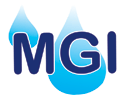Morven Glenavy Ikawai Irrigation Company farm environment plan template approved
Environment Canterbury today announced its approval of a farm environment plan template for Morven Glenavy Ikawai Irrigation Company (MGI), including Waihao Downs Irrigation, under the proposed Land & Water Regional Plan.
MGI owns and operates the Morven Glenavy Irrigation scheme. The company takes water from the Waitaki River at the Stone Wall and Bells Pond intakes on the north bank. MGI supplies water for irrigation to 24,800 hectares of land, as well as 3300 hectares of the Upper Waihao River catchment through Stage 1 of the Waihao Downs Irrigation Scheme. It also provides an environmental enhancement flow for the Waihao River.
Acknowledging the quality of the template, Environment Canterbury Chief Executive Bill Bayfield said MGI had met all the requirements of Schedule 7 of the proposed Land & Water Regional Plan.
“We hope the farm environment plans that come from this template are valuable both for MGI shareholders and for the scheme,” Mr Bayfield said. “It was pleasing to see the Farm Environment Plan Assessment Panel commending the quality of the application and in particular the explanation of how the uptake of farm environment plans by MGI and Waihao Downs farmers would be supported, the clear outline of the audit process and the possible follow-up actions as a result of those audits.
“The Land & Water Regional Plan is a primary delivery mechanism of the Canterbury Water Management Strategy,” Mr Bayfield said. “It is reassuring to see in this template a methodology that will enable development of plans identifying actual and potential environmental effects and risks to properties, addresses those effects and risks, and has a high likelihood of appropriately avoiding, remedying or mitigating them.”
MGI Chairman Robin Murphy said he was delighted that the farm environment plan had been recognised as meeting the standard set by Environment Canterbury.
“This continues to further our shareholders’ long-term involvement with farm environment plans from when we started developing them in 2009,” Mr Murphy said.
“It means farmer shareholders are now able to qualify their responsibilities under the proposed Land & Water Regional Plan as well as meet our standards for best practice irrigation.”
Under the proposed Land & Water Regional Plan, a farm environment plan will need to be produced in any circumstances where an application for consent to farm is required.
“There are several situations where a consent will be required at different times in future, depending on how at risk water quality is in the zone where the property is located,” Mr Bayfield said.
“Irrespective of the rules, we encourage all farmers to prepare farm environment plans. They will help identify environmental and business risks and planning for their management. International markets are increasingly demanding proven sustainability, and farm environment plans are one way to demonstrate this.”
Under Schedule 7 of the proposed Land & Water Regional Plan, farm environment plans can be prepared either by landowners themselves or via industry-prepared templates and guidance material.
Minimum content is specified, and all farm environment plans must include an assessment of the adverse environmental effects and risks associated with the farming activities and how those effects and risks will be managed, including irrigation, application of nutrients, effluent application, stock exclusion from waterways, offal pits and farm rubbish pits. Farm environment plans must be auditable.
For more information on the proposed Land & Water Regional Plan, go to www.ecan.govt.nz/lwrp
For information on MGI, go to www.mgiirrigation.co.nz
